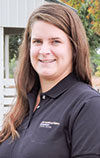Cow nutrition is always on the minds of farmers and ranchers, especially when it comes to cost, quantity and quality of feedstuffs available. Be careful not to overlook it leading up to calving season. In the last trimester of gestation, soon-to-be mother cows should be at their best body condition and nutrition. Adequate body condition during this time has been linked to subsequent breed-back rates and calf performance in the months after calving.
During the last three months of pregnancy, 70% of the calf’s growth is completed. If she is not consuming a high-nutrient diet of at least 8% crude protein (CP) and 54% total digestible nutrients (TDN), she will begin to use her body reserves; subsequently, her weight and body condition will decrease to compensate for the growth of the calf.
If you notice some cows in your herd are at a low body condition of less than 4, start working to increase their condition now. If they are not at an adequate body condition score (BCS), after calving, the growth of their newborn calf and their ability to breed back are decreased.
The most beneficial thing producers can do is separate those cows in low condition (BCS of less than 4) and begin feeding them a higher plane of nutrition. This may include supplementation or a high-protein roughage like alfalfa hay or corn silage. This ration will cost more than a typical cow’s winter diet, but it can save you later during the breeding season with a higher proportion of cows being bred early in the season.
If you’re not familiar with body condition scoring, you can consult with your local livestock extension educator or veterinarian to understand how to score your cows and, more importantly, what to do with the scoring data.
In addition, testing your feed ingredients for CP and TDN will give you the tools to make management decisions on how to develop your ration and if it is meeting requirements. The last few weeks prior to calving can be challenging as you fight the elements of early winter, but with forward thinking and proper management, you can set yourself up for a successful calving season.








